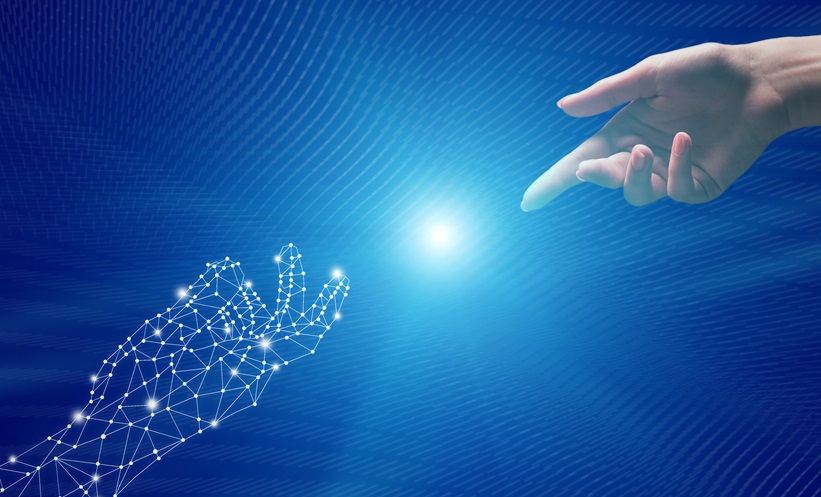Written by Anaya Malik | Editorial Assistant, EMG-Health
![]()
REMOTE communication tools have flourished following the rapid spread of the novel coronavirus, keeping individuals informed and united across the globe. Information providers NHS Digital and NHSX are making headway with a range of digital solutions for tracking, diagnostics, and management of the disease. The innovative advancements in technology occurring before our eyes is better equipping us to handle public health emergencies as we take stock of the capabilities of the NHS dealing with this immense amount of pressure. It appears we are on a path to digital diagnostics, where telehealth consultations may become best practice.
Experts say that coronavirus presents the most serious public health threat since the 1918 flu pandemic. While we are still in the eye of the storm it is difficult to forecast the aftermath, but it is certainly not an exaggeration to suggest that our response is likely to change the future of public healthcare. The aggression of infectious diseases and the resultant destruction have a lasting effect on the planet, and this is known to drive innovation. The pandemic has highlighted flaws in our healthcare system, for example our ability to react to a novel virulent pathogen and has created the need for change. Some have described a recent complacency in the provision of public health, which has now been brought to a dramatic halt. Our next actions must be tailored to restore public confidence in government decisions.
In the UK, we have seen a more sophisticated approach to digital technology in recent weeks, causing a shift in our methods of delivering healthcare. Long-distance communication between patients and doctors made possible by remote monitoring is a highly convenient tool that could lessen the spread of the virus by reducing time spent travelling and unnecessary exposure. Telemedicine could help to minimise the burden and reduce extreme pressure on hospitals and frontline healthcare services inundated with a high volume of cases.
Getting patients in front of doctors virtually is not the only technological advancement to emerge in response to the pandemic. NHS Digital is creating an algorithm to identify the patients who are most at risk of contracting the disease. This algorithm will take an individual’s age and medical history into account so that, if the appropriate data is available, there will be an electronic record of whether someone is considered to be in the vulnerable category, and if they are positive for COVID-19.
A coronavirus contact tracking app is being developed by NHSX. For some who have already tested positive for COVID-19, contact tracking has been deployed on a small scale. Adopting a technological approach to tracking and managing the disease in the form of apps may prove to be extremely beneficial. NHS Digital has been instructed by the UK Health Secretary to collect data for a comprehensive understanding of the nation’s grasp of the threat, and to assess the efficiency and ability of the NHS to cope under immense strain. Having access to the wealth of data collected over this time will help us in future to use data science to address context specific challenges quickly and efficiently, avoiding a repeat of the adversity we’re now facing. The centre is permitted to share the data with other ‘approved organisations’ to help combat the situation.
Research is accelerating to tackle the pandemic and the medical community is pushing for accurate, rapid, and online diagnostic testing for COVID-19. Digital diagnosis and virtual monitoring tools facilitate necessary communication between people in instructed isolation and healthcare professionals, ensuring people are kept a safe distance from one another. Telehealth consultations may prove to be the smartest and safest form of patient monitoring through which doctors can easily and conveniently deliver an evaluation. Some 4,000 GP practices in the UK are now offering video consultations to their patients and experts say making the switch to telehealth consultations just 5% of the time would result in 300,000 fewer direct patient–doctor consultations per week. Prebooked appointments are taking place on the telephone freeing up the number of accessible daily appointments and time for general practitioners who must cope with the increased workload caused by the virus. The changing demands on healthcare services and the expansion of protective measures taken by the government might be pivotal in adapting the very foundations of public health strategies, where we will see digital technology implemented in policies long-term.
The availability of telemedicine will contribute to the system of keeping low-risk patients at home reducing their exposure to novel infections and managing high-risk patients with quick and accurate diagnoses, mitigating spread of the virus. Telehealth interfaces to remotely monitor and engage patients are promising in the delivery of healthcare and to support our healthcare services; could this be the legacy of rapid adaptation following this unprecedented outbreak?








